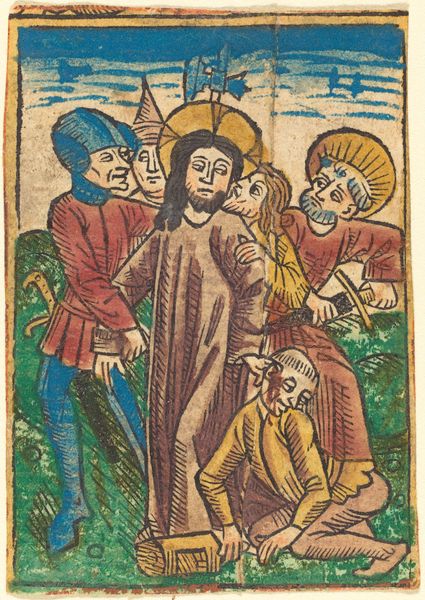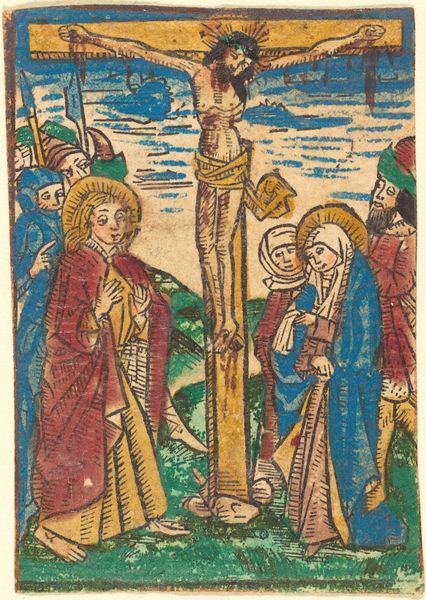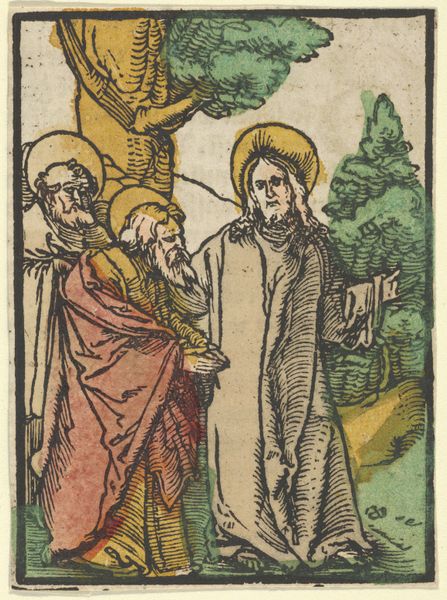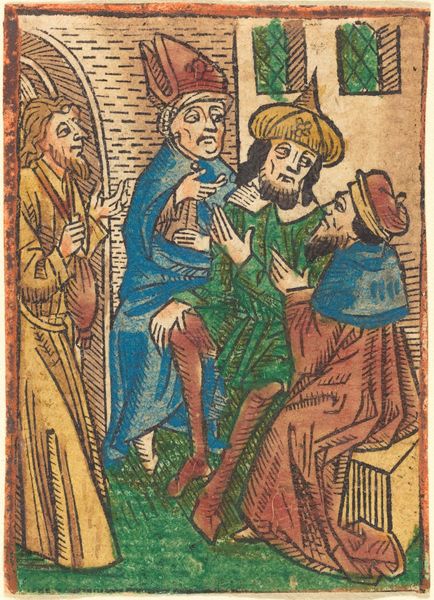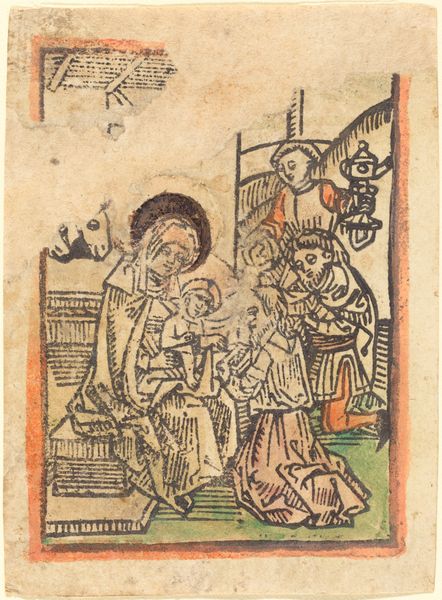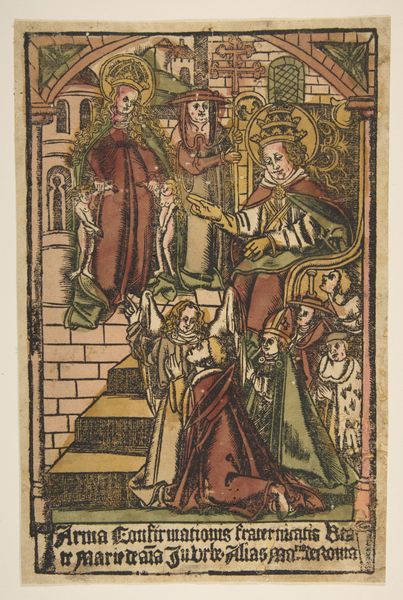
print, woodcut
#
medieval
#
narrative-art
# print
#
figuration
#
woodcut
#
history-painting
Copyright: National Gallery of Art: CC0 1.0
Editor: This woodcut print, "The Betrayal," dates back to the late 15th century. I’m immediately struck by how packed the composition is, almost claustrophobic. There’s a lot going on in a small space, figures crammed together. What are your thoughts on this depiction of such a pivotal moment in religious history? Curator: This woodcut, indeed, reflects a particular visual culture, showcasing how religious narratives were disseminated amongst the public. Notice the almost cartoonish style of representing drama. What impact might this image have had when it was made widely available as a small print, do you think? Editor: I imagine it made the story more accessible, less formal. Did the proliferation of images like this shift religious authority? Curator: Precisely. It allowed for a more personal engagement with biblical narratives outside the direct control of the church. The emotional intensity is palpable, even within the constraints of the medium. It's a far cry from grand church altarpieces, don’t you agree? Editor: Definitely, this feels much more… democratic, in a way. It seems almost made for individual contemplation. The fact that it’s reproducible also speaks to that democratization. It changes the whole power dynamic. Curator: Consider how this very act of reproduction and widespread dissemination of religious iconography arguably diminishes the singularity and preciousness formerly associated with these biblical representations. It brings up so many points on authorship, public perception, and the ever-changing cultural landscape. Editor: This has been so insightful. I never thought about a small woodcut holding so much cultural significance! Curator: Every artifact, no matter its size or intended purpose, participates in a complex web of historical forces and represents critical societal transformations.
Comments
No comments
Be the first to comment and join the conversation on the ultimate creative platform.


